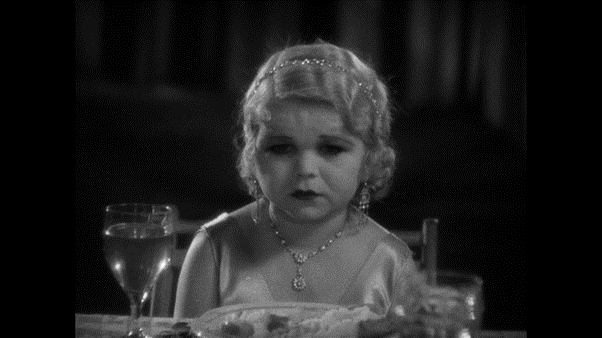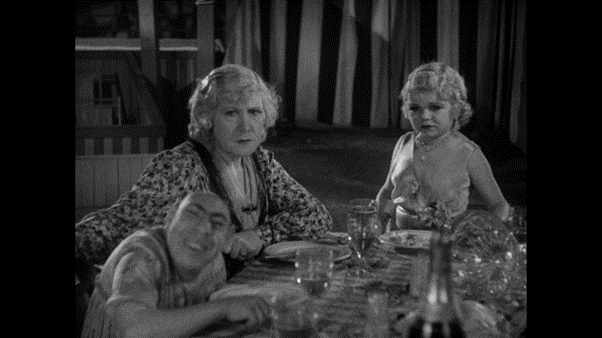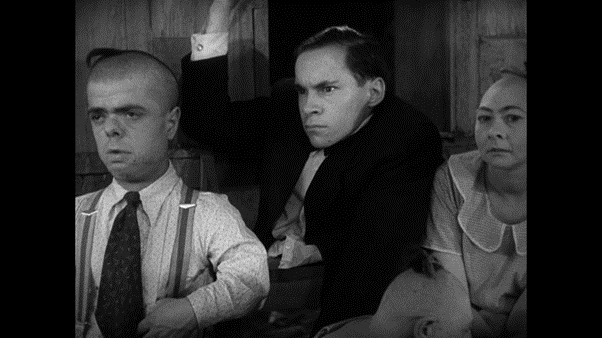Why "FreakZine"?
Some years ago, whilst listening to yet another SquareSpace ad on yet another podcast, I decided to start domain squatting on a URL against future need. I am disabled, so something useful in that vein seemed like a good goal. Now to find a title. The phrase “spacking up is the blacking up of the 21st century” stuck in my head from coverage of Channel 4’s Cast Offs , an early exposure to reclaimed language around my particular form of otherness. The supreme example of that is Ian Dury’s ‘Spasticus Autisticus’, which I loved seeing performed by a band of disabled musicians at the 2012 Paralympics closing ceremony. It’s an anthem, but as my disability is sensory, I do not think it is necessarily a term I can reclaim. I get different slights; the first was when I was but a recent teenaged disabled, when a classmate called me “Blinky”. I have no wish to memorialise them further, and besides, it’s way too specific. “Freak”, on the other hand, I could work with. It is more general, and has good slogan hacking potential, too; "Freaks Out!” and “Let Your Freak Flag Fly” may one day be good t-shirts. One paragraph in, we are plotting merch; a good start.
I was a big Dinosaur Jr. fan in the process of discovering the Olympia Riot Grrrl scene of the 90s. From the latter I had become aware of the “Zine” as a fan-made means of bypassing media gatekeepers to get perspectives into circulation. I suffer from compulsive punning, and given that they play a song about how J and Lou just can’t get along at every damn show with “Freak” in the title, I spotted an opportunity. “Freak Scene”, FreakZine. My hard-won English degree has taught me that this is a “paronamasia”, or “assonant pun”. Now that I am an extra-mature grad, I find that such knowledge has not made me any more employable; I had better do something else with it, then.
“Freak” also lets me pay tribute to my favourite depiction of disability on screen, Tod Browning’s Freaks (1932). I will have plenty of opportunities to expound on this, I am guessing; the hiring managers aren’t in a hurry. My route to the film was tortuous. First, there was Mark Gatiss talking about his inability to look at the page on it in his book about horror films in a documentary. Browning ‘boldly decided to use actual carnival performers in the film’, he says, and remarks ‘This is not a brilliant Jack Pierce make-up job, these are real people’. Leaving aside his audible disgust at bodies like mine, it’s intriguing language; it implies that ‘actual’ disabled bodies representing disabled people is ‘bold’. In the context of film history, it is atypical, in large part because of Browning’s film’s poor reception. However, if I may indulge a bad habit borne out of my intersectionalism, I must ask why. Were he commenting on a cinematic depiction of a racial other in the same terms, we would point out that blackface and its relatives were always bad, and racist, so we stopped doing them. Polite society is not calling for the return of Al Jolson. Recently calls have come from the LGBTQ+ community for queer roles to be played by similarly queer actors. Unless Sia screws up, my tribe don’t get the same treatment, however; this is curious.
When I eventually got to watch the film, consistently cast as a “horror”, my confusion deepened. Apart from the abjected bodies, it is a gold-digger plot. Boy meets girl, girl strings him along in return for lots of money, girl tries to poison him to take all the money, he gets his mates to help him take revenge. As there’s nothing innately horrific there, it appears that we are supposed to see the Freaks’ bodies as the source of the horror. Just being on screen is enough. Now I am absolutely down for a critique of the film on the grounds that the gold-digger plot is misogynist, and that a person lavishing gifts upon a potential romantic partner should not expect anything by right in return. However, the idea that bodies like mine inspire horror, and can only properly be depicted by impersonators, is unsatisfactory.
This led to a hopelessly delayed essay occupying much of my time in the Covid lockdowns. I drew on Robert Bogdan’s Freak Show: Presenting Human Oddities for Amusement and Profit (London: University of Chicago Press, 1990), which tracks the institution’s progress from mass entertainment to derided obscenity, now viewed as ‘despicable, a practice on the margin, limited to a class with poor taste’ [Bogdan, p. 2] to argue that the film was an attempt by sideshow performers to present a counter-narrative to the growing dominance of the eugenics movement as it took control of the disabled body. This meant a shift from a space where the freak show could present entertaining fictions in the gaps left by ‘the mystery of certain forms of human variation’ [Bogdan, p. 278] to one where ‘People who were different had diseases and were now in the province of physicians, not the general public.’ [Bogdan, p. 268] This meant performers went from being ‘congratulated for parlaying into an occupation what, in another context, might have been a burden’[Bogdan, p. 268] to one where ‘people with physical and mental anomalies came under the purview of professionals.’[Bogdan, p. 278]
Many were secluded from the public. Their conditions were to be treated, and possibly cured, behind closed doors. They were to be pitied and, from a eugenics perspective, feared. They needed to be locked away for the protection of society.[Bogdan, p. 278]
Freaks came out two years before the Nazis started the T4 Program, and includes a scene where a gamekeeper says of the Freaks ‘there must be a law in France to smother such things at birth’ [Freaks (1932) on DVD, 5:10]. Eugenics was clearly in the air. For those counting, it has taken until paragraph 5 to break Godwin’s law. Unless the breach is in the continuation, in which case paragraph 6 follows.
Modern condemnation of the freak show seems to ignore the lack of alternatives available to the disabled performers. Bogdan acknowledges that the fictions necessary to freakery may have damaged perceptions of the disabled, as ‘by flaunting normal accomplishments as extraordinary, and by hailing people with disabilities as human wonders, aggrandized presentations probably taught the lesson that achievement for people with differences was unusual.’ [Bogdan, p. 279] That, to me, is a secondary concern. In 21st century Britain, I have some insulation from immediate starvation thanks to what is left of our post-war social democracy. This was not available to anyone in the 1930s. The performers adopted the means available to them to earn a living. If survival is predicated on economic activity, lectures on the tastefulness of an occupation ring hollow. Bogdan also points out that the medicalised view of the disabled body is not neutral; it comes with its own slant:
The person is not a person but a diagnosis. When under the direct supervision of the medical profession, patients wear standardized garments—gowns and other institutional accoutrements. The "true life” stories are one-sided clinical descriptions, and the photos are posed straight on, with blank expressions, as if the person were only the carrier of the diagnosis. The pictures are not in family albums but in medical atlases.' Sterility is presented as synonymous with objectivity. [Bogdan, p. 277]
I think I prefer the one with spangles.
The public sided with the eugenicists, and so violent was the backlash that 90-odd years later, disability on screen is still made in the effects department, and by actorly effort. When I mentioned my interest in the film, I was more than once told the story of F Scott Fitzgerald vomiting at the Warner’s commissary when he saw the Hilton twins eating lunch. A Little Britain skit did something similar with WI ladies realising they’d eaten food cooked by BAME people. If this was ever redeemable, the bigotry of the WI lady would have had to be the butt of the joke. Sub the racially othered person for conjoined twins, and the village bigot for the author of The Great Gatsby, and it becomes reasonable behaviour, apparently. The backlash didn’t stop Harry Earles, the boy who meets the girl, from appearing as a munchkin in The Wizard of Oz in 1939, though, which tells its own story. A “cute” framing was apparently acceptable.
However badly my reading of the film lost the argument, I still think there’s plenty to salvage. Against a hostile world, the “Code of the Freaks” – ‘Offend one, and you offend them all’ [Freaks, 1:00] – is a strong defensive rallying call for an outsider community. The “loving cup” toast – ‘We accept [you], one of us’ [Freaks, 42:00] – at the wedding is also a succinct call for solidarity against a hostile world. I yearn for such a community; I don’t often get to be in rooms where disabled people are the majority, but whenever I do, it’s a lot of fun.
I was most struck, however, by what I read as Browning’s use of the camera as a tool to examine the power relations around the Freaks. Consider the framing of Harry and Daisy Earls’ conversation as a conventional shot reverse shot from their eye level.
I am neither a little person (please forgive me if you are and prefer a different term), nor do I use a wheelchair. I have, however, heard the latter complaining of being perpetually talked down to. Here, the camera draws attention to this power imbalance, and provides a possible way to mitigate it. Camerawork as praxis could also be inferred from Browning’s habit of shooting the Freaks staring straight down the lens, usually after Cleo and Hercules have done something to threaten Hans. He does this a lot.
This has a double effect; it indicates that the Freaks have seen what the conspirators are up to, and also implies eye contact with the audience, drawing them into a conversation. We see how we are treated. We can see that you see how we are treated too. How do you (the non-freaky, that is) feel about how we feel? It is, to bowdlerise the Prince of Darkness, me looking at you looking at me. Given the recent focus in media criticism on the power relations implied by various “gazes”, I think we have here an opportunity to posit a disabled, or anti-ableist, one. Bogdan suggests that ‘The job of those who want to serve people known as disabled should be to get behind the scenes, to know them as they are, not as they are presented.’ [Bogdan, 279] Browning’s film only shows the freaks off stage; it is at least an attempt to present the freaks as something other than their performed roles, ‘behind the scenes (…) as they are’. It is cinema as empathy-generating machine inviting a non-disabled audience to feel for my tribe.The 1932 audience did not welcome this invitation to empathise; in fact, they could not bear such regard. I embark on this project hoping that a more sympathetic audience might be found in 2024. I am of course merely providing another presentation, but I hope it is one that will inform and entertain. A long-winded way to get to saying that the project shall be to chronicle the ways tribe Freak has been offended, how we might become less so, and who (if anyone) is worthy of being made to think they are a chicken.
If you, like me, see yourself among the Freaks, hello, you’re welcome. I hope I can provide an enjoyable skew on our shared troubles. If you find yourself identifying more with Cleo, well, I hope to persuade you otherwise, and please don’t poison anyone while you’re here. It would be nice if we did not get to the point where making you think you’re a chicken was justifiable. To get there she did poison one of us at their wedding party, which was a bit mean. And trash all of our stuff. And call him a baby. And kiss her co-conspirator in front of him. All that was mean, too. If you feel my thoughts are worth paying for, thank you so much, you are wonderful. I’m down for the intersectional struggle for a more equal society. If you are too, please consider taking us along. If we’re trying to build a non-patriarchal, non-white supremacist, non-heteronormative, non-cisnormative, non-oligarchy, classless society1, it’d be nice if we could flourish there too.
I will aim to be back with another post every two weeks.
Yours pseudonymously2,
Rotluchs
References
‘Spasticus Autisticus@The Paralympics London 2012’ (<<https://www.youtube.com/watch?v=RI9AI6VAimY>>) [Accessed 1/9/2024]
‘THE MURDER OF PEOPLE WITH DISABILITIES’, The United States Holocaust Memorial Museum, <<https://www.ushmm.org/collections/bibliography/people-with-disabilities>> [Accessed 31/5/2022]
Bogdan, Robert, Freak Show: Presenting Human Oddities for Amusement and Profit (London: University of Chicago Press, 1990)
Conlan, Tara, ‘Disability turns laughing matter in Channel 4 comedy show’, 2009, (<<https://www.theguardian.com/media/organgrinder/2009/nov/23/disability-channel-4-comedy>>) [Accessed 1/9/2024]
Cuddon, . A., rev. Preston, C. E., The Penguin Dictionary of Literary Terms and Literary Theory (London: Penguin, 1999)
Freaks (1932), on DVD
Please let me know if I’ve missed any.
There is still a chance that someone might hire me, so plausible deniability a la Private Eye seems sensible. My degree also means I know of “anonymuncule” as ‘A derogatory term for a petty type of anonymous writer. A mean, shifty writer who hides behind anonymity.’ [J. A. Cuddon, rev. C. E. Preston, The Penguin Dictionary of Literary Terms and Literary Theory (London: Penguin, 1999)] Let’s see how we go.
















